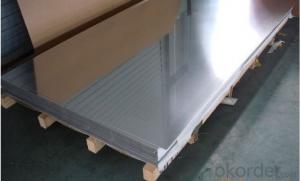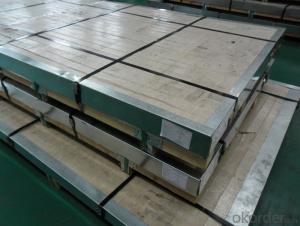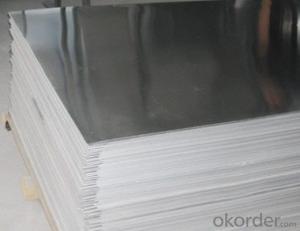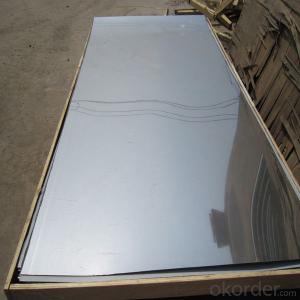Stainless Steel sheet 316Ti with No.4 Surface Treatment
- Loading Port:
- Shanghai
- Payment Terms:
- TT OR LC
- Min Order Qty:
- 500 m.t.
- Supply Capability:
- 5000000 m.t./month
OKorder Service Pledge
OKorder Financial Service
You Might Also Like
Hot sale stainless steel sheet 201/202/304/304l/310S/309S/316L/316Ti/316/321,410/420/430/444/443/409L, and 904L.
Description of Stainless Steel Sheet:
Description | steel sheet,hot rolled steel sheet,cold rolled steel sheet, steel sheet,sheet,steel plate |
Standard | ASME, ASTM, EN ,BS,GB,DIN, JIS etc |
Application | Steel sheet applies to construction field, ships building industry, petroleum & chemical industries, war and electricity industries, food processing and medical industry, boiler heat exchanger, machinery and hardware fields. |
Packaging | Standard export sea-worthy packing |
Delivery time | 10-30 days |
Quality | No.1 |
Productivity | 500 tons/Day |
Note | Our company has cooperative relation between the domestic agents. Stainless steel sheet can be made accordingto the customers requirements. Fasten delivery. Quality assured. |
Contacts | If you have any question,please feel free contact me. |
Stainless steel sheet surface finish characteristics
Surface finish | Characteristics and application |
2B | The surface brightness and flatness of no2B is better than no2D. then through a special surface treatment to improve its mechanical properties,No2B could nearly satisfy comprehensive uses. |
No.1 | Polished with abrasive belt of grit#100-#200, have better brightness with discontinuous coarse stria, used as inner and external ornaments for building, electrical appliances and kitchen utensils etc. |
No.4 | Polished with abrasive belt of grit #150-#180,have better brightness with discontinuous coarse stria, but thinner than No3, are used as bathtub buildings inner and external ornaments electrical appliances kitchen utensils and food processing equipment etc. |
HL | Polished with abrasive belt of grit #150-#320 on the NO.4 finish and has continuous streaks, mainly used as buildings ornaments elevators, door of building, frontal plate etc. |
BA | Cold rolled, bright annealed and skin-passed, the product have excellent brightness and good reflexivity like mirror, kitchen apparatus, ornament etc. |
8K | The product have excellent brightness and prefer reflexivity can to be the mirror. |
Main Features of stainless steel sheet :
•Escalator, Elevator, Doors
•Furniture
•Production tools, Kitchen appliances, freezers, cold rooms
•Auto Parts
•Machinery and Packaging
•Equipment and Medical devices
•Transport system
Product Details:
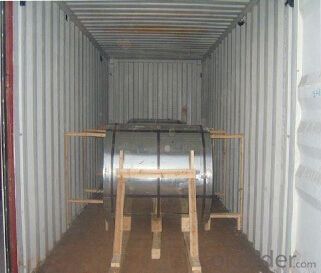
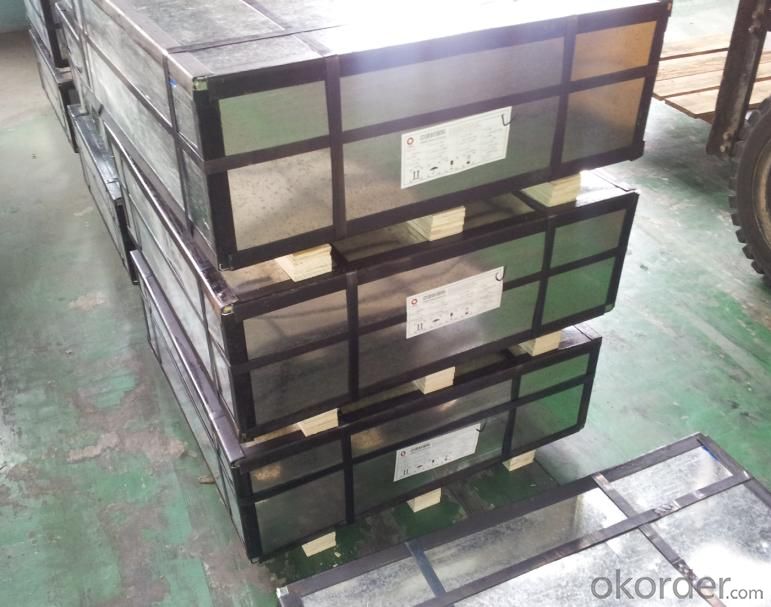
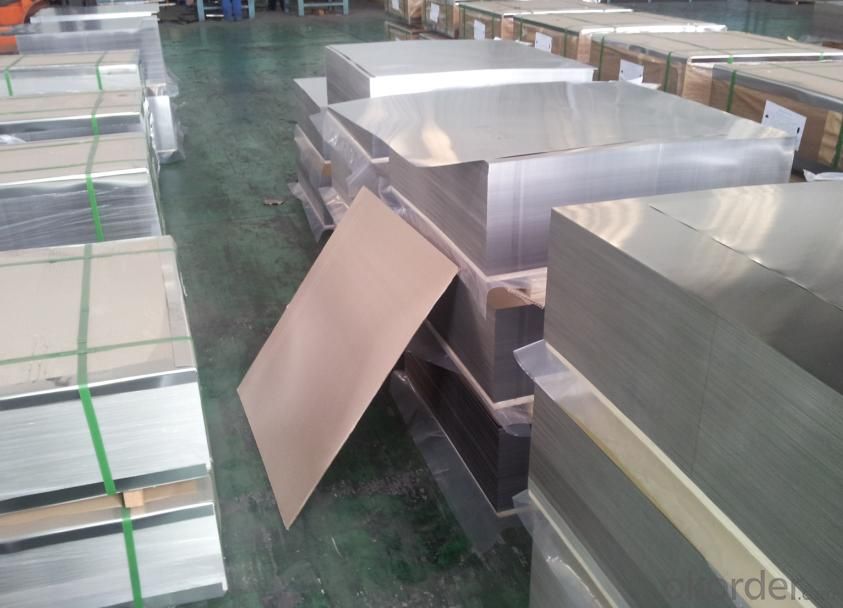
Sandard Seaworth Packing(wooden packing with water proof paper)
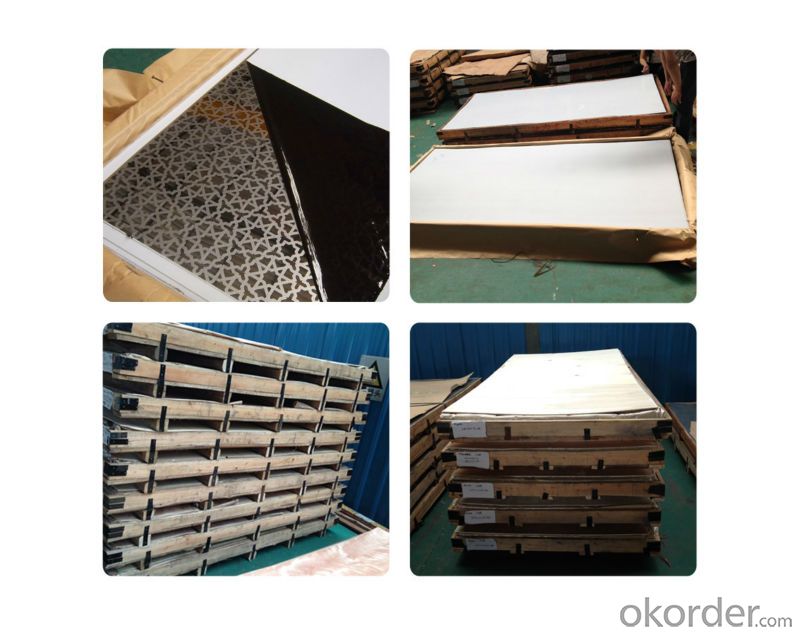
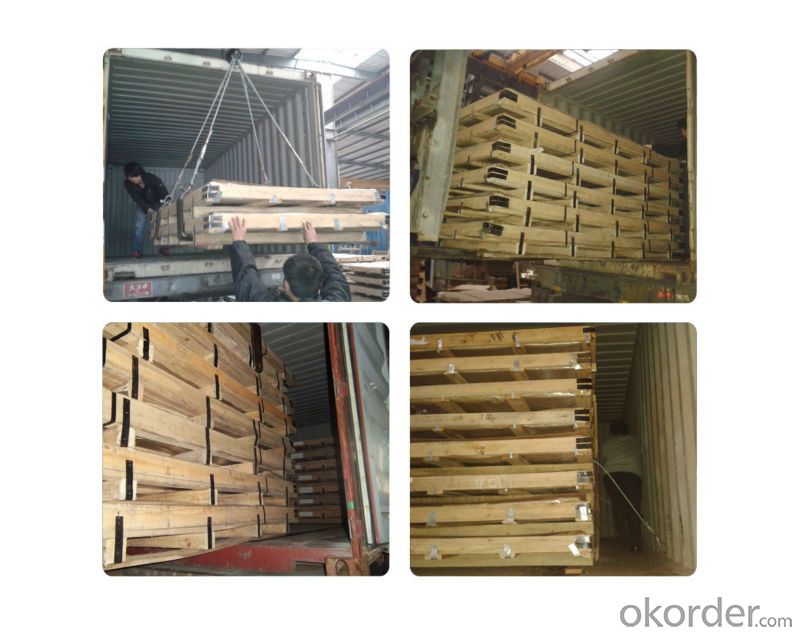
FAQ:
1. What's the quality?
very fine
2. How long get reply?
within 24 hours
If you have any question about stainless steel sheets,donot forget to sending the email to Us! You will get the competitive Price and have a very good experience about the Buying Process! CNBM International Corporation is always your trustful friend!
- Q:What are the different types of corrosion that stainless steel sheets can resist?
- Stainless steel sheets are highly resistant to various types of corrosion, including general corrosion, pitting corrosion, crevice corrosion, and stress corrosion cracking.
- Q:What are the properties of stainless steel sheets?
- Stainless steel sheets possess multiple properties that make them extremely desirable in various industries and applications. To begin with, their excellent corrosion resistance is a result of the presence of chromium in the alloy, which forms a protective oxide layer on the surface, preventing rust and staining. Moreover, stainless steel sheets are renowned for their strength and durability. They can withstand heavy loads and resist deformation due to their high tensile strength. This makes them suitable for applications requiring structural integrity and longevity, such as in construction, automotive, and aerospace sectors. Another significant property of stainless steel sheets is their resistance to heat and fire. They can endure high temperatures without losing their structural integrity or strength. As a result, they are ideal for applications involving extreme heat, like commercial kitchens and industrial furnaces. Additionally, stainless steel sheets are hygienic and easy to clean, making them suitable for use in the food and medical industries. Their non-porous surface prevents the growth of bacteria, making them a reliable choice for food processing equipment, surgical instruments, and medical devices. They also possess an attractive appearance, with a smooth, reflective surface that is easy to maintain. This makes them aesthetically pleasing and suitable for architectural and decorative applications, such as building facades, interior design, and furniture manufacturing. Lastly, stainless steel sheets are highly versatile and can be easily formed, welded, and fabricated into various shapes and sizes. This flexibility allows for customization and adaptation to specific project requirements, offering designers and engineers a wide range of possibilities. In summary, stainless steel sheets offer corrosion resistance, high strength and durability, heat and fire resistance, hygiene, ease of cleaning, an attractive appearance, and versatility. These properties have made them a popular choice in numerous industries, ensuring their widespread use in various applications.
- Q:Are stainless steel sheets safe for medical applications?
- Yes, stainless steel sheets are safe for medical applications. They are widely used in the medical industry due to their excellent corrosion resistance, biocompatibility, and durability. Stainless steel is easy to clean, sterilize, and maintain, making it suitable for surgical instruments, medical devices, and equipment used in healthcare settings.
- Q:Can stainless steel sheets be used for outdoor furniture?
- Indeed, outdoor furniture can make use of stainless steel sheets. Stainless steel, a material known for its exceptional durability and resistance to rust, corrosion, and weathering, proves to be an excellent choice. Its ability to withstand the elements ensures that it maintains its appearance and structural integrity over time, making it the perfect option for outdoor furniture. Moreover, stainless steel possesses a sleek and contemporary aesthetic that complements a wide range of outdoor design styles. Whether one seeks stainless steel sheets for tables, chairs, or any other outdoor furniture pieces, they can be assured of a visually appealing and enduring choice.
- Q:Can stainless steel sheets be used for chemical storage tanks?
- Yes, stainless steel sheets can be used for chemical storage tanks. Stainless steel is known for its corrosion resistance, making it an ideal choice for storing a wide range of chemicals. It is durable, easy to clean, and can withstand high temperatures and pressure, making it a reliable material for chemical storage applications.
- Q:Seeking stainless steel plate 304 material and 304j material what is the difference?
- 304 material and 304J1 contain nickel different, 304J1 contain 6 nickel, 304 contain 8 nickel
- Q:What is the fatigue strength of stainless steel sheets?
- The fatigue strength of stainless steel sheets may differ based on various factors, including the specific grade of stainless steel, the manufacturing process, the surface finish, and the testing conditions. Generally, stainless steel sheets exhibit high fatigue strength due to their inherent properties, such as their ability to withstand cyclic loading and their resistance to corrosion. Typically, the fatigue strength of stainless steel sheets is measured in terms of stress amplitude (σa) or stress range (σr), indicating the level of stress the material can endure for a specific number of cycles before failure. Fatigue testing is often conducted to determine this, involving subjecting the material to repeated cyclic loading until it fails. The number of cycles required for failure is referred to as the fatigue life. Different grades of stainless steel possess varying fatigue strengths, with higher grades usually demonstrating greater resistance to fatigue. Austenitic stainless steels like 304 and 316, for example, exhibit excellent fatigue strength and are commonly employed in applications with significant cyclic loading, including structural components and automotive parts. The fatigue strength of stainless steel sheets can also be impacted by surface finish. Inadequate surface conditions, such as scratches, notches, or roughness, can act as stress concentrators and decrease fatigue strength. Hence, it is essential to ensure that stainless steel sheets possess a smooth and defect-free surface to maximize their resistance to fatigue. Additionally, environmental factors like temperature, humidity, and corrosive substances can influence the fatigue strength of stainless steel sheets. Elevated temperatures and aggressive environments can decrease the fatigue life of stainless steel. Therefore, it is crucial to consider these factors when designing for fatigue resistance. To summarize, the fatigue strength of stainless steel sheets is generally high due to their inherent properties. However, it can vary depending on factors such as the grade of stainless steel, surface finish, and environmental conditions. Conducting fatigue testing and considering these factors during the design process can help guarantee the optimal performance and durability of stainless steel sheets in applications involving cyclic loading.
- Q:What are the advantages of using stainless steel sheets in the aerospace industry?
- There are several advantages of using stainless steel sheets in the aerospace industry. Firstly, stainless steel has excellent corrosion resistance properties, which is crucial in environments with high moisture and temperature fluctuations. This helps to maintain the structural integrity of the aircraft and ensures longevity. Additionally, stainless steel sheets offer high strength-to-weight ratio, making them ideal for constructing lightweight yet durable components. They also possess high heat resistance, allowing them to withstand extreme temperatures that may be encountered during flight. Furthermore, stainless steel sheets can be easily formed and fabricated into complex shapes, providing design flexibility. Overall, these advantages make stainless steel sheets a reliable and efficient choice for various aerospace applications.
- Q:What is the maximum temperature that stainless steel sheets can withstand?
- The grade of stainless steel used determines the maximum temperature that stainless steel sheets can endure. Typically, stainless steel is recognized for its exceptional resistance to heat and can endure temperatures between 1200°F and 1600°F (650°C and 870°C). Nevertheless, the precise temperature limit can differ based on the grade of stainless steel, the sheet's thickness, and the duration of exposure to elevated temperatures. To ascertain the maximum temperature tolerance for a particular stainless steel sheet, it is crucial to refer to the manufacturer's specifications or consult a materials engineer.
- Q:How do I prevent stress relaxation on stainless steel sheets?
- Stress relaxation is a phenomenon that occurs in stainless steel sheets when they are subjected to prolonged exposure to high temperatures or constant stress. To prevent stress relaxation on stainless steel sheets, you can take the following measures: 1. Proper selection of stainless steel grade: Different grades of stainless steel have varying resistance to stress relaxation. Choose a grade that offers high resistance to this phenomenon, such as austenitic stainless steels like Type 304 or Type 316. 2. Avoid excessive temperatures: Stainless steel sheets should be operated within their recommended temperature limits. Exposing them to temperatures beyond their specified range can accelerate stress relaxation. Ensure that the operating temperature remains within the permissible limits. 3. Control the stress levels: Minimize the stress levels applied to the stainless steel sheets during fabrication and installation. Avoid excessive bending, stretching, or deformation that could introduce stress into the material. Properly design and fabricate the components to reduce stress concentration points. 4. Post-weld heat treatment: If the stainless steel sheets are welded, consider performing a post-weld heat treatment. This process involves subjecting the welded area to controlled heating and cooling cycles to relieve residual stresses and minimize the potential for stress relaxation. 5. Reduce exposure to aggressive environments: Stainless steel sheets are corrosion-resistant, but exposure to aggressive chemicals or environments can accelerate stress relaxation. Avoid prolonged exposure to corrosive substances or environments that may compromise the material's integrity and cause stress relaxation. 6. Regular inspections and maintenance: Periodically inspect the stainless steel sheets for signs of stress relaxation, such as deformation, cracks, or changes in dimensions. Regular maintenance and timely repairs can help identify and address any issues before they worsen. 7. Consult with experts: If you are unsure about the specific requirements to prevent stress relaxation in your stainless steel sheets, consult with metallurgical experts or stainless steel manufacturers. They can provide guidance on the best practices and materials to ensure long-term performance and prevent stress relaxation. By implementing these preventive measures, you can significantly reduce the risk of stress relaxation in stainless steel sheets, ensuring their durability and maintaining their structural integrity over time.
1. Manufacturer Overview |
|
|---|---|
| Location | |
| Year Established | |
| Annual Output Value | |
| Main Markets | |
| Company Certifications | |
2. Manufacturer Certificates |
|
|---|---|
| a) Certification Name | |
| Range | |
| Reference | |
| Validity Period | |
3. Manufacturer Capability |
|
|---|---|
| a)Trade Capacity | |
| Nearest Port | |
| Export Percentage | |
| No.of Employees in Trade Department | |
| Language Spoken: | |
| b)Factory Information | |
| Factory Size: | |
| No. of Production Lines | |
| Contract Manufacturing | |
| Product Price Range | |
Send your message to us
Stainless Steel sheet 316Ti with No.4 Surface Treatment
- Loading Port:
- Shanghai
- Payment Terms:
- TT OR LC
- Min Order Qty:
- 500 m.t.
- Supply Capability:
- 5000000 m.t./month
OKorder Service Pledge
OKorder Financial Service
Similar products
New products
Hot products
Related keywords
